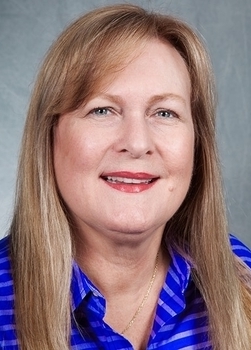Those of us who work as trial/jury consultants usually thrive on the excitement of the research day, the day when we conduct our focus groups, mock trials, jury simulations, or employ other methods of data collection. These days, thanks to books, movies, and a certain popular television show, many people are aware of some of the things trial/jury consultants do to obtain information for our clients. However, in my work as a social psychologist who conducts litigation research, the research day represents a fraction of the work my staff and I perform on behalf of our clients. I recently considered this in terms of percentages. There are 3 time periods involved in the life cycle of Magnus’ work for our clients: (1) the pre-research day period, comprising approximately 20% of our time and resources; (2) the research day, which comprises approximately 30% of our time and resources; and (3) the post-research day period, which represents the balance of our work, approximately 50%. Most of Magnus’ clients never fully appreciate the time and effort spent by the Magnus staff at times other than the 1 day when we are all together during the mock trial, focus group, etc. We do not expect our clients to understand/appreciate all of our work behind the scenes. In fact, we prefer they not consider what we are doing on their behalf. If we do our jobs properly (and we always do!), our efforts should appear seamless and flawless, leaving the attorneys to be free to do other things on behalf of our mutual clients. This being said, we could never get to the research day without hours, days, and weeks (sometimes, months) of preparation. There are research facilities to be reserved, travel arrangements to be made for all staff members, research participants to be recruited, legal documents pertaining to the case to be read, survey instruments to be drafted, and much more. And, while the research day is long, arduous, and stressful, our work is far from over upon our return to the office. Post-research days, as I explain to all new hires, are not vacation time or rest time. Once our data are collected during the research day, they have to be analyzed (both qualitatively and quantitatively); videos of the research proceedings have to be edited, produced, and sent to our clients; and I have to spend days and days synthesizing complex information, then writing a comprehensive report for our clients. Editing the report, in and of itself, is a task that is not for the faint of heart. Multiple drafts are prepared, lots of red ink is used in the editing process, and tensions are at an all time high as we strive to meet the deadline for sending the report to our client. After the written report is sent, our work on the case is still unfinished, until the report has been reviewed with all the clients involved in the case. And, we are usually working for more than one client at a time, which means we are in the midst of pre-research day activities for some clients at the same time we are in the process of preparing other clients’ reports. But, this is all in a day’s work and it is what we do, and do well!
I’ve never stopped to consider the percentages breakdown as Melissa has done here. And, I think I’d add that there is some “margin of error” depending on the case, but generally, it does come down to these three big work segments. That is, after I’ve gotten the client to agree on the research design and retain us – a process that can add significantly to the front end. We try to make the pre-research days, research day and post-research days sail as smoothly as possible. Prior to the research day, we handle the logistics in ways to minimize what the lawyers have to do. Oddly, to me, some clients have asked me if they have to secure the research facility or recruit the mock jurors. I don’t know why they assume that, other than, perhaps, some of them have had to do these things for their consultants. No, we handle those details, for the clients’ convenience, and to ensure things are done correctly – i.e., our way. Our way of doing things is for a reason in that we strive hard to make sure no artificial biases influence the process. The same is true for the research day – we work hard so that the client can show up and follow our lead through the day. That is, our protocols make everything we can control run smoothly. We’ve written other blogs about the times when some of our clients have tried to muck things up – and the troubles they have caused for us, and ultimately, their clients. Post research, our goal is to get the clients their “deliverables,” the videos and reports, as soon as possible, and in a form that is helpful. Our goal with reports is to ensure that they captured both “what happened” during the research – as it pertains to the specific mock juror decisions, as well as what factors lead to their decisions. I often tell prospective clients this is part 1 of the report. Part 2 is our recommendations for strategies going forward. Even though, immediately after a research day, we are all tired and our brains often feel over taxed, this is when the most intense brain work begins – as noted by Melissa’s identification of this phase as the most involved part of the process. In our opinion, the report must be concise – to allow clients to focus on the important issues. And, it must be direct in describing recommendations. We’ve been told we always hit this target with our reports. Some clients who have used other consultants have told us their reports have been either too academic to parse or too unsophisticated to be helpful. The reporting process is a very intense process, as Melissa points out. And, it is one we’ve refined over the years. A major refinement was the development of a client portal to enable clients to access some of the work product deliverables easily so that the trial team can review the results faster than FedEx or UPS could get them in their hands. In contrast to that somewhat high tech system, a low tech system helps with another point Melissa made – that is, keeping up with multiple projects simultaneously. One aspect of that system is decidedly low tech. Many years ago, we purchased several sets of plastic baskets – in red/green pairs. Each case in process in the post research phase is assigned a pair of baskets. Items which are “client ready” go in the green basket. Items which are works in process go in the red basket. That way, pieces of the report can be readied at different times, and staged accordingly, as the actual report goes back and forth through the editing process. The cover letter, title page, etc., all can be done in advance and set aside to be used to prepare the final package. Some of these details seem minor, but they are pointed out here to note how, after 30 or so years in the trial consulting industry, we continue to strive to help our clients help our collective clients.



Comments are closed.